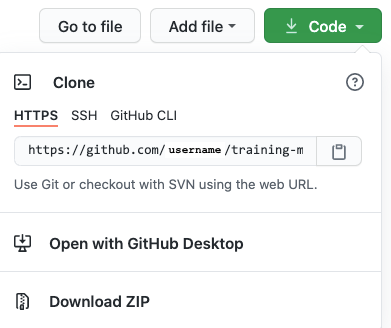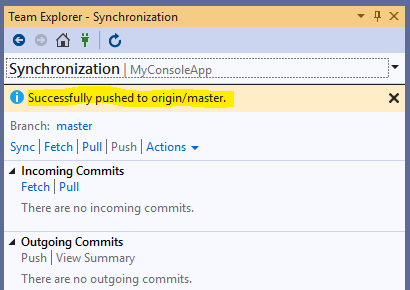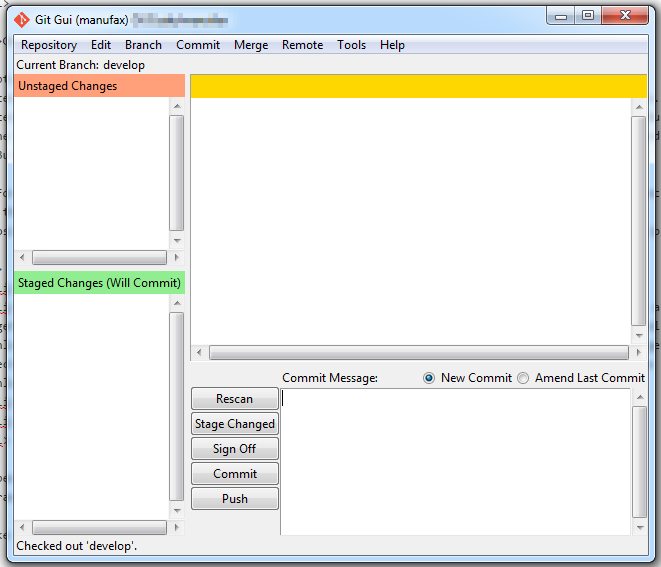

- GITHUB DESKTOP CREATE REPOSITORY FROM EXISTING FOLDER HOW TO
- GITHUB DESKTOP CREATE REPOSITORY FROM EXISTING FOLDER UPDATE
- GITHUB DESKTOP CREATE REPOSITORY FROM EXISTING FOLDER DOWNLOAD
GITHUB DESKTOP CREATE REPOSITORY FROM EXISTING FOLDER DOWNLOAD
Click the green Clone or download button on the repository page.There are just a few essential steps to this:

Pushing to a new repository with a README file For the purpose of this article, I will assume that readers are familiar with Terminal usage (GitBash or otherwise).

I will be breaking down several ways to push content to Github. Now, I want to breakdown the process for new coders (and poets - hopefully ), so that they can become comfortable with working with Github too. I remain ever grateful that I took the initiative to make my first git commit. I did this, because it is what I love the most, after coding. You can use this command without ‘git add’, only if there is no new file added.When I started actively pushing content to Github, I did not push Open Source contributions, Components or anything of the like - I pushed poetry.
GITHUB DESKTOP CREATE REPOSITORY FROM EXISTING FOLDER UPDATE
Got to GitHub Repository, the one you plan to delete.Ĭlick on the ‘Delete’ repository button at the bottom of the Settings page.Īs you modify your local project folder, you need update the GitHub Repsoitory.Īdd new files and updates the existing files You just need to remove whole project directory. In terminal window, go into project directory and type:ĭelete local git repository together with the local project directory. You just need remove the ‘.git’ in the local repository. There are two ways.ĭelete local git repository while keeping the local project directory. It is very easy to delete the local Git Repository. Ls -al ~/.ssh Delete Local Git Repository The supported SSH public keys for GitHub Enterprise Server are ‘id_rsa.pub’, ‘id_ecdsa.pub’, ‘id_ed25519.pub’. SSH is more secure protocol and requires a SSH key. SSH: my instructions, I preferred the HTTPS because it is easy to use in setup. You are using this address to connect the local repo to GitHub repo. The main difference between them is the GitHub repository address. The GitHub setup page, displayed just after repository created, has two button ‘HTTPS’ and ‘SSH’. GitHub gives you an option to choose which one to use in your repositories. HTTPS and SSH are secure communication / file transfer protocols. Note: You may add/remove and comment/uncomment in this file depending on your need. In GitHub Repository, the maximum size limit per file is 100 MB. You can use it to stop tracking some hidden files or exclude uploading the large files. The ‘.gitignore’ is a text file that contains the list of files and directories to be excluded, not tracked and not uploaded, in the git repository. Now your GitHub repository page displays the files in your local project directory. The whole command line is actually provided on the setup page. Note: You need to use the address ‘….’ displayed on your own GitHub repository setup page. You created local git repository for this directory in Step 1.Ĭonnect your local repository to GitHub repository, In terminal window, go into or stay in your local project directory. Step 3: Push local git repository to GitHub

GITHUB DESKTOP CREATE REPOSITORY FROM EXISTING FOLDER HOW TO
See ‘More Tips’ section below to learn how to create. Even though it is not a required component, I highly encourage you to create one. This file contains the list of files and directories to be excluded, not tracked and not uploaded, in the git repository. (Optional) Create ‘.gitignore’ in your project directory. On terminal, go into your local project directory which you plan to create a git repository from. Step 1: Initialize a local git repository Step 3: Push local git repository to GitHub.Step 2: Create a new blank repository on GitHub.Then, I will procide few more tips which might be helpful to you in the process. In this post, I will explain how to create a GitHub Repository from an existing Local directory/folder in your computer.


 0 kommentar(er)
0 kommentar(er)
